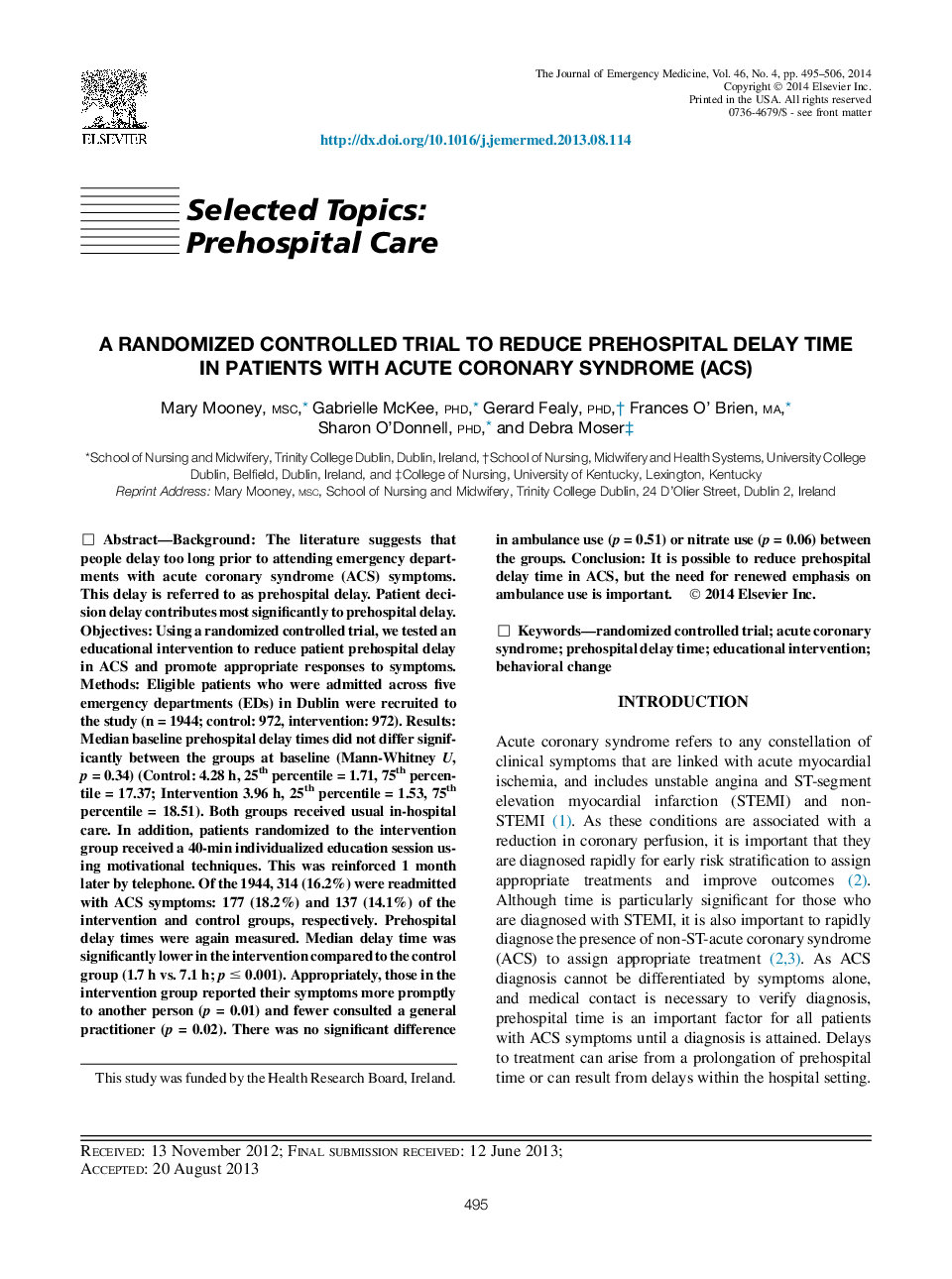| Article ID | Journal | Published Year | Pages | File Type |
|---|---|---|---|---|
| 3247410 | The Journal of Emergency Medicine | 2014 | 12 Pages |
BackgroundThe literature suggests that people delay too long prior to attending emergency departments with acute coronary syndrome (ACS) symptoms. This delay is referred to as prehospital delay. Patient decision delay contributes most significantly to prehospital delay.ObjectivesUsing a randomized controlled trial, we tested an educational intervention to reduce patient prehospital delay in ACS and promote appropriate responses to symptoms.MethodsEligible patients who were admitted across five emergency departments (EDs) in Dublin were recruited to the study (n = 1944; control: 972, intervention: 972).ResultsMedian baseline prehospital delay times did not differ significantly between the groups at baseline (Mann-Whitney U, p = 0.34) (Control: 4.28 h, 25th percentile = 1.71, 75th percentile = 17.37; Intervention 3.96 h, 25th percentile = 1.53, 75th percentile = 18.51). Both groups received usual in-hospital care. In addition, patients randomized to the intervention group received a 40-min individualized education session using motivational techniques. This was reinforced 1 month later by telephone. Of the 1944, 314 (16.2%) were readmitted with ACS symptoms: 177 (18.2%) and 137 (14.1%) of the intervention and control groups, respectively. Prehospital delay times were again measured. Median delay time was significantly lower in the intervention compared to the control group (1.7 h vs. 7.1 h; p ≤ 0.001). Appropriately, those in the intervention group reported their symptoms more promptly to another person (p = 0.01) and fewer consulted a general practitioner (p = 0.02). There was no significant difference in ambulance use (p = 0.51) or nitrate use (p = 0.06) between the groups.ConclusionIt is possible to reduce prehospital delay time in ACS, but the need for renewed emphasis on ambulance use is important.
